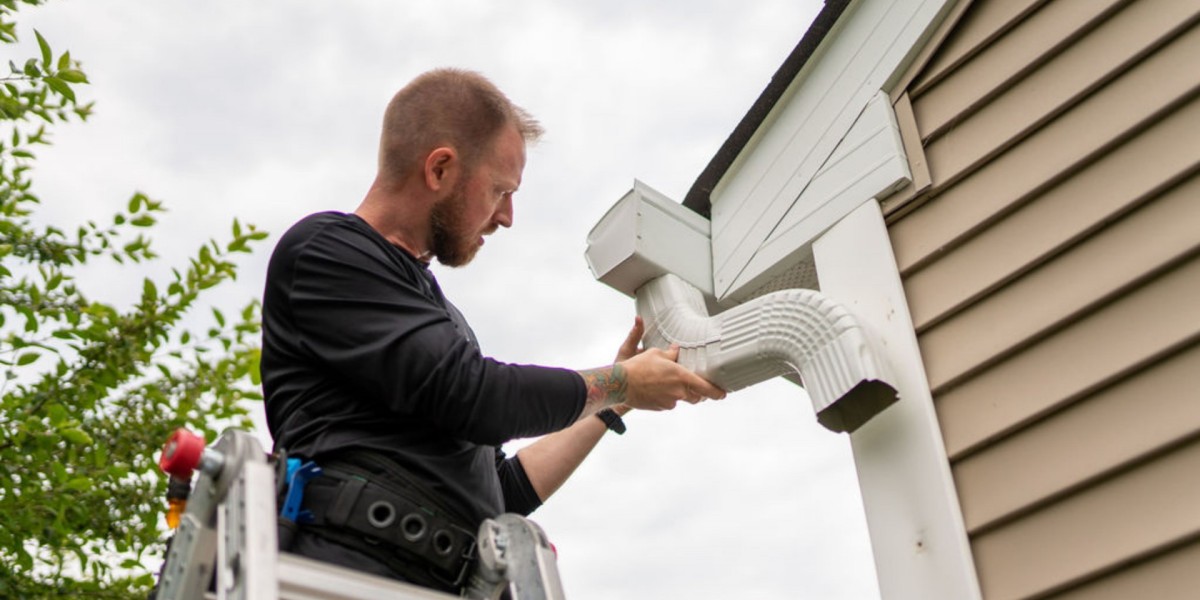Your gutters play a crucial role in protecting your home from water damage. Over time, however, even the most durable gutters can deteriorate, leading to inefficiencies and potential structural issues. Gutter replacement is a vital home improvement project that not only safeguards your property but also enhances its overall appearance. In this guide, we’ll cover everything you need to know about gutter replacement, from identifying signs of wear to choosing the right materials and professionals.
Why Gutter Replacement is Important
Gutters are designed to channel rainwater and melted snow away from your home’s foundation, roof, and siding. When gutters fail, water can accumulate in unwanted areas, causing:
Foundation Damage: Water pooling near the foundation can lead to cracks, leaks, and structural instability.
Roof Leaks: Inefficient gutters can cause water to back up onto the roof, leading to leaks and potential rot.
Landscape Erosion: Overflowing gutters can wash away soil, damage plants, and create unsightly erosion around your home.
Siding and Paint Damage: Water spilling from broken gutters can stain or damage your siding and peel away exterior paint.
Replacing old or damaged gutters ensures your home remains protected from these costly and inconvenient issues.
Signs You Need Gutter Replacement
Knowing when to replace your gutters is essential to maintaining your home’s integrity. Here are some common signs that indicate it’s time for a replacement:
1. Cracks or Holes
Small cracks or holes can be patched, but extensive damage may require a full replacement. Over time, these flaws can worsen, reducing the gutters’ ability to channel water effectively.
2. Rust or Corrosion
Metal gutters, particularly steel ones, are prone to rust and corrosion. Once rust spreads, it weakens the gutters and compromises their functionality.
3. Sagging or Pulling Away
If your gutters are sagging or pulling away from the house, it’s a sign that they’re no longer properly secured. This could be due to damaged brackets, rotted fascia boards, or the weight of accumulated debris.
4. Water Pooling Around the Foundation
When gutters fail to direct water away from your home, you may notice pooling near the foundation. This is a major red flag that your gutter system needs attention.
5. Peeling Paint or Water Stains
Look for peeling paint or water stains on your home’s exterior. These are signs that water is not being properly directed away from the house.
6. Frequent Clogs
If your gutters clog frequently despite regular cleaning, they may be too small or improperly installed to handle the volume of water in your area.
Choosing the Right Gutter Material
When replacing your gutters, selecting the right material is crucial. Each type of gutter material has its own benefits and drawbacks. Here’s a breakdown of the most common options:
Aluminum
Aluminum gutters are lightweight, rust-resistant, and affordable. They are easy to install and come in a variety of colors to match your home’s exterior. However, they can dent under heavy impact.
Steel
Steel gutters are strong and durable, making them a good choice for areas with extreme weather. While they are more resistant to physical damage than aluminum, they are prone to rust if not properly maintained.
Copper
Copper gutters are highly durable and add a sophisticated, timeless look to your home. However, they are one of the most expensive options and may require professional installation.
Vinyl
Vinyl gutters are lightweight, inexpensive, and easy to install. They are a popular choice for DIY projects but may not last as long as metal options, especially in areas with extreme temperatures.
Zinc
Zinc gutters are long-lasting and resistant to corrosion. They develop a natural patina over time, which protects them from the elements and gives them a unique appearance. However, they come at a higher price point and require professional installation.
Types of Gutter Systems
In addition to choosing the material, you’ll need to decide on the type of gutter system for your home. The two main types are:
Sectional Gutters
Sectional gutters are pre-cut into smaller sections that are joined together during installation. While they are easier to install, the seams can become weak points where leaks develop over time.
Seamless Gutters
Seamless gutters are custom-made to fit your home’s dimensions, reducing the risk of leaks. They are more durable and visually appealing but typically require professional installation.
The Gutter Replacement Process
Replacing gutters involves several steps to ensure a successful installation. Here’s an overview of the process:
Step 1: Inspection and Removal
A professional will inspect your existing gutter system to determine the extent of the damage. Once confirmed, the old gutters will be removed carefully to avoid damaging the fascia or roof.
Step 2: Preparing the Fascia
The fascia board, which supports the gutters, will be inspected for damage. If necessary, it will be repaired or replaced to provide a solid foundation for the new gutters.
Step 3: Measuring and Cutting
Seamless gutters will be measured and cut on-site to fit your home precisely. For sectional gutters, the pieces will be prepared for assembly.
Step 4: Installation
The gutters will be securely attached to the fascia using brackets or hangers. Downspouts will be installed to direct water away from the foundation.
Step 5: Testing
After installation, the system will be tested to ensure proper water flow and drainage. Any adjustments will be made as needed.
Maintaining Your New Gutters
To extend the life of your new gutters, regular maintenance is essential. Here are some tips:
Clean Regularly: Remove leaves and debris at least twice a year to prevent clogs.
Inspect for Damage: Check for signs of wear, such as loose brackets or small cracks, and address issues promptly.
Install Gutter Guards: Gutter guards can minimize debris buildup and make maintenance easier.
Ensure Proper Drainage: Make sure downspouts are clear and direct water at least three feet away from the foundation.
Benefits of Hiring a Professional
While DIY gutter replacement might seem appealing, hiring a professional offers several advantages:
Expertise: Professionals have the experience and tools to ensure a flawless installation.
Time-Saving: A professional team can complete the project efficiently, saving you time and effort.
Warranty: Most contractors offer warranties on their work, giving you peace of mind.
Safety: Professionals are equipped to work safely at heights, reducing the risk of accidents.
Conclusion
Replacing your gutters is a worthwhile investment that protects your home from water damage and enhances its overall functionality. By choosing the right materials, hiring a qualified professional, and maintaining your new gutters, you can ensure they last for years to come.
If you’re ready to replace your gutters, consider reaching out to trusted experts like Faver Roofing LLC. With their dedication to quality and customer satisfaction, they can help you select and install the perfect gutter system for your home. For more information or to schedule a consultation, visit Faver Roofing LLC today. Protect your home with a gutter system built to last!



